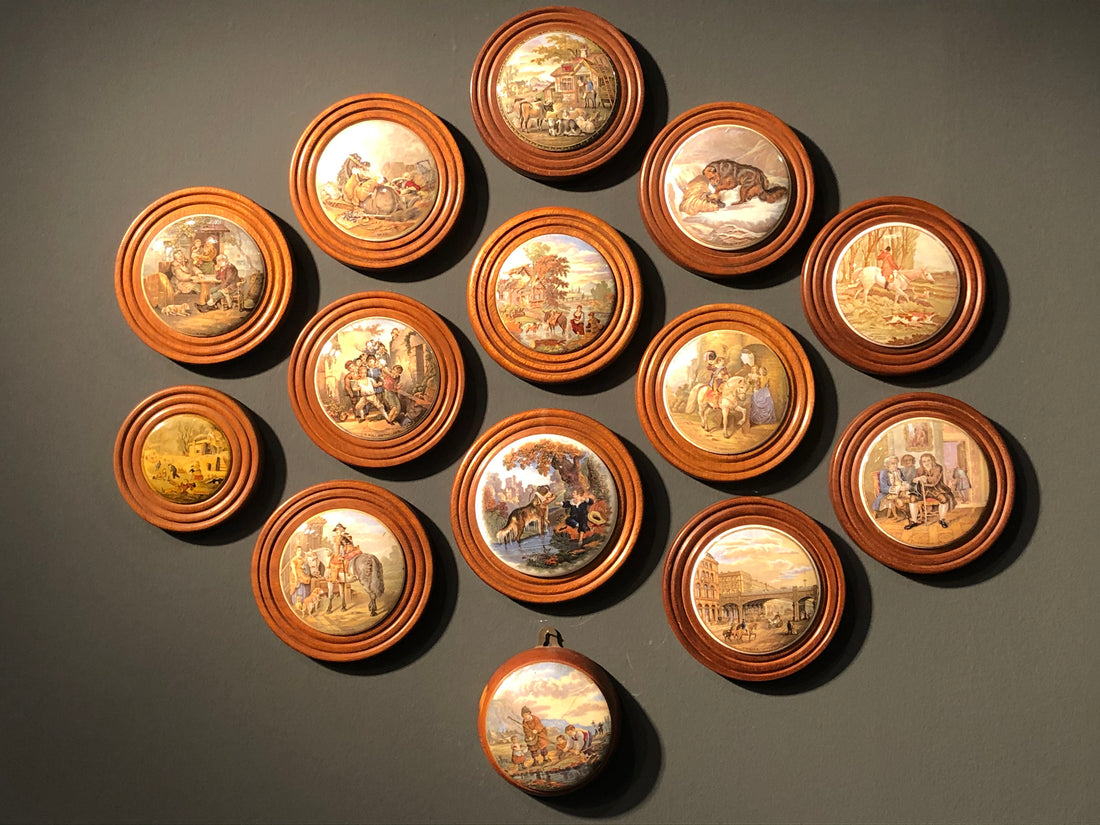
It was Felix Edward Pratt (1813-94) who identified the commercial possibilities of using new printing technology to decorate container lids for popular products such as bear fat, tobacco, potted crayfish and cosmetics, with sophisticated designs. After 1840 F. & R. Pratt in Staffordshire, became the leading manufacturer of multi-colour transfer printed jar lids.
Long admired for their exceptional technique, variety and historical value as a social influence, lids have a venerable history of collecting and rank among the most desirable everyday objects of the Victorian period.
By 1848 a color printing process on paper had been adapted to decoration on ceramics, employing several color plates to create polychrome decorations previously only achievable by decorating by hand.
Felix Pratt's genius was to apply the technology to jar lids. He hired Jesse Austin, a talented artist and engraver who joined Pratt in about 1843 to produce hundreds of drawings over a 40-year period. Pratt exhibited them at the Great Universal Exhibition of 1851, arousing the enthusiasm of wealthy industrialists eager to use them for their products.
More than 550 different designs and variations were recorded, and many collectors aimed to own a good example of each. The subjects printed on many lids gave a clue to their contents (Pegwell bay for potted shrimp, floral subjects for women's cosmetics, bears for bear fat, etc.). But others depict different subjects, such as British and European landmarks, scenes from Shakespearean plays or the Crimean War.
This is why they have a history of collecting as old as their manufacture (so beautiful that they were mounted on frames to be hung on the wall) and already in 1897, just three years after the death of Felix Pratt, an exhibition of the its productions. Auctions special events were held as early as 1924, when many wealthy industrialists from the Midlands saw the covers associated with the beautiful and evocative prints. A collectors' club was founded in the mid-1960s, and in the 1970s it reached its peak with the famous Sotheby's auctions dedicated to this subject. The rare lid known as “the Spanish lady” sold in 2001 for £2700 as part of Ken Smith's collection. In recent years some pieces have sold for prices in excess of £5,000.

